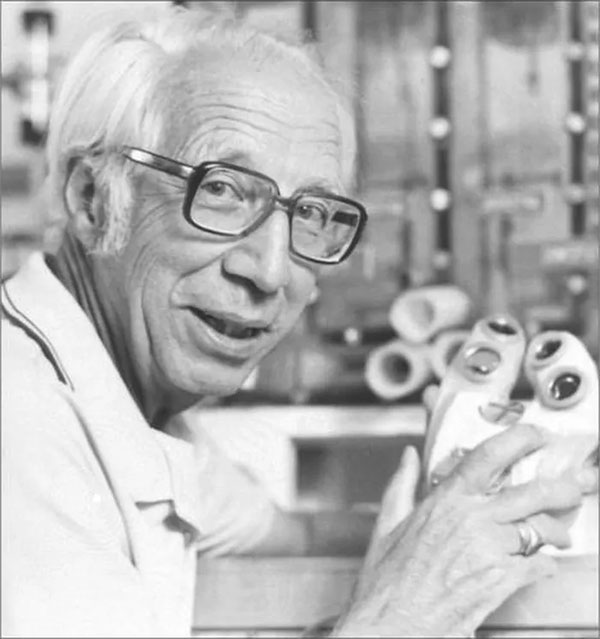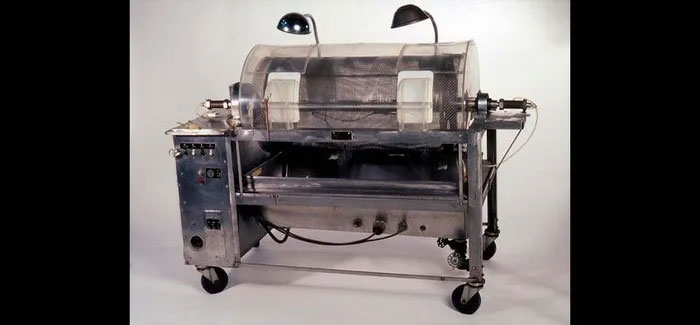With the aim of extending life for patients, a Dutch scientist named Willem Kolff invented the world’s first dialysis machine. This invention is considered a precursor to the development of modern dialysis machines today.
Willem Kolff was born in Leiden, Netherlands, on February 14, 1911. From a young age, he was fascinated by medicine and spent much time learning from his father, who was the director of the Tuberculosis Nursing Institute in Beekbergen.
In 1930, Kolff began studying medicine at Leiden University, one of the oldest universities in Europe. After graduating in 1938, he became a research fellow at the University of Groningen. During this time, he witnessed a 22-year-old man die from kidney failure. This experience sparked his interest in the possibility of artificially simulating kidney function to remove toxins from the blood of patients. He found a seasoned mentor in Professor Polak Daniels, head of the medical department at the University of Groningen.

Portrait of scientist Willem Kolff (1911 – 2009).
When Germany invaded the Netherlands in 1940, Kolff established the first blood bank on the European continent. As the Dutch defense system collapsed, Professor Daniels and his wife committed suicide. The Nazis offered Kolff the position of Daniels at the University of Groningen, but he declined and moved to the small town of Kampen, where he worked at a local hospital.
In 1943, Kolff developed the world’s first blood filtering machine, or dialysis machine. He used tubes made of cellulose wound around a rotating wooden drum. Toxins in the blood could diffuse through the surface of the tubes, while the rotating drum was immersed in a saline solution.
The patient’s blood—containing many toxins due to kidney failure—was drawn into the tubes, flowed through the saline solution, and returned to the patient’s body after the toxins were removed. “I noticed that in just five minutes, almost all the urea [about 400 milligrams] that I added to the blood sample was removed and diffused into the saline solution,” Kolff stated.
Although the first 15 patients using Kolff’s dialysis machine only lived a few more days, it was still a significant achievement. Kolff helped conscious, dying men and women live a little longer.

Willem Kolff’s dialysis machine. (illustrative image).
With the aim of extending patients’ lives further, Kolff continued to improve the dialysis machine and had the opportunity to test it on a 67-year-old woman with severe kidney failure in Kampen in 1945. Despite facing much opposition in treating this patient, he decided to proceed with the blood filtration due to his responsibility as a doctor. As a result, the patient gradually recovered and lived for another seven years.
In 1946, the University of Groningen awarded Kolff a doctorate. That same year, he published his first book entitled “The Artificial Kidney” in both Dutch and English. A year later, he published a second book on treatment methods for patients with high urea levels in the blood.
In 1950, Kolff was invited to join the research team at Cleveland Hospital and migrated to the United States. He became a U.S. citizen in 1956. At Cleveland Hospital, he shifted his research focus to cardiovascular issues and developed one of the first heart-lung machines. This device functions to pump blood and provide oxygen to patients during open-heart surgery.
In 1955, he attended the first conference of the American Artificial Organs Association. Since then, he shifted his attention to developing implantable artificial hearts. In 1957, he performed the implantation of an artificial heart in a dog, which survived for 90 minutes. He believed he was on the right track, even though medical journals and reputable associations at the time did not accept articles related to artificial organ transplantation.
In 1967, Kolff moved to the University of Utah. He became the head of the Artificial Organs Department and also served as the director of the Biomedical Engineering Institute at the school. During his time there, he sought to help kidney failure patients perform dialysis at home without medical supervision. In 1975, he successfully created the Wearable Artificial Kidney (WAK)—a 3.6 kg dialysis machine worn on the chest, accompanied by an 8 kg auxiliary tank.
At the University of Utah, Kolff continued his research on artificial hearts. He and his colleagues developed increasingly efficient mechanical hearts. In 1982, he supervised the first implantation of an artificial heart in a human. The patient was Barney Clark, a 61-year-old retired dentist with a terminal illness. Clark lived for nearly four months after the surgery. Although the increasing success rates of human heart transplants diminished interest in artificial hearts at that time, Kolff’s achievements remained noteworthy.
Throughout his career, Kolff received numerous prestigious awards, including the Amory Award, the Valentine Award, the Cameron Prize for Therapeutics from the University of Edinburgh (1964), and the Albert Lasker Award for Clinical Medical Research—the highest honor in American medicine (2002). The Albert Lasker Award Committee described him as: “Kolff was instrumental in developing the method of artificial dialysis, transforming kidney failure from a fatal disease into a treatable condition, extending the lives of millions of patients.”
In 1985, Kolff was honored to be inducted into the National Inventors Hall of Fame (NIHF). In 1990, Life magazine named him one of the 100 most influential Americans of the 20th century.




















































